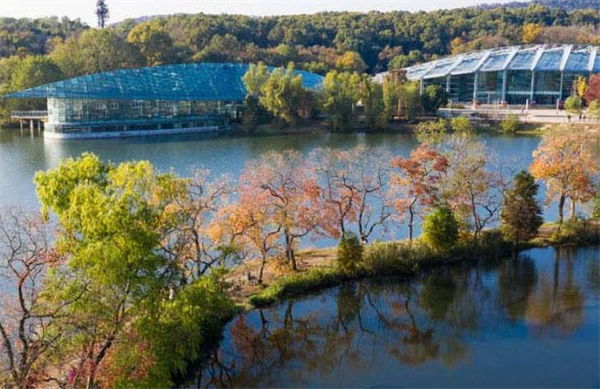In the world we live in, there are all kinds of plants, and the place with the most variety of plants must be the botanical garden. There are many botanical gardens in China, which are used as research plants and tourists. This post introduces the top ten famous botanical gardens in China.
1.Shanghai Botanical Garden 上海植物园
Shanghai Botanical Garden, formerly known as Longhua Nursery, is located in the southwest of Xuhui District, Shanghai, bounded by Longwu Road in the east, Longchuan Road in the west, Pingfu Road in the south, and Zhangjiatang Port in the north. It covers an area of 81.86 hectares. A comprehensive botanical garden focusing on display, horticultural research and popular science education.
Shanghai Botanical Garden is divided into exhibition area and green planting area. The exhibition area has four exhibition areas: plant evolution area, environmental protection area, artificial ecological area, greening demonstration area and Huangdaopo temple tourist area. Each area is divided into special plants A number of plots are the main scene, accompanied by sketches of garden architecture. The park mainly collects and introduces wild plants in the middle and lower reaches of the Yangtze River, and collects more than 3,500 species of living plants, more than 6,000 varieties.
Shanghai Botanical Garden is the highest member of the International Botanical Gardens Conservation Union (BGCI). In December 2011, Shanghai Botanical Garden was rated as a national AAAA tourist attraction. In October 2020, it was rated as a five-star park in Shanghai. In February 2021, it was named as the fifth batch of national forest and grass science popularization bases by the Chinese Forestry Society.
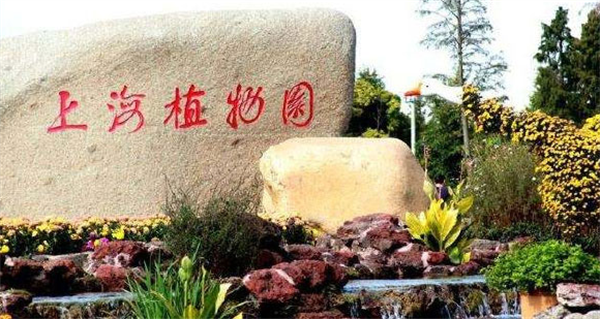
2.Shenyang Botanical Garden
Shenyang Botanical Garden, located in Hunnan District, Shenyang City, Liaoning Province, is also known as Shenyang World Expo Garden and Shenyang World Horticultural Expo Garden. Functional comprehensive tourist attractions. It was built in February 1959 and officially opened to the outside world in 1993. It covers an area of 211 hectares.
The Botanical Garden takes the Lily Tower, Phoenix Square, and Rose Garden as its landmark theme buildings. It gathers gardens and architectural masterpieces from five continents of the world and key cities in China. There are 100 exhibition gardens distributed in the north and south districts.
Shenyang Botanical Garden is the site of the 2006 China Shenyang World Horticultural Exposition. It is known as the “Expo Garden in the Forest”. In 2004, it won the title of the first batch of 5A-level tourist attractions in the country.
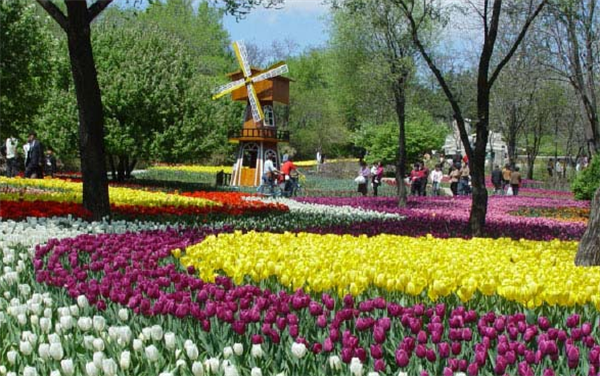
3.Xianhu Botanical Garden 仙湖植物园
Xianhu Botanical Garden is located on Xianhu Road, Liantang, in the eastern suburbs of Luohu District, Shenzhen City, Guangdong Province. It is adjacent to Wutong Mountain in the east and Shenzhen Reservoir in the west. Xianhu Botanical Garden integrates plant collection, research, popularization of scientific knowledge, tourism and leisure, and is one of the important bases for scientific research of ornamental plants in China.
Xianhu Botanical Garden was rated as a national “AAAA” scenic spot by the National Tourism Administration in 2007, and was rated as a “National Key Park” by the Ministry of Construction in 2008.
As of 2012, Xianhu Botanical Garden has collected and introduced nearly 8,000 species of living plants, and has 21 special plant areas. The most distinctive feature is the “National Cycad Germplasm Resources Conservation Center” officially established on December 18, 2002. There are more than 240 species of cycads in 3 families, 10 genera, ranking second in the world.
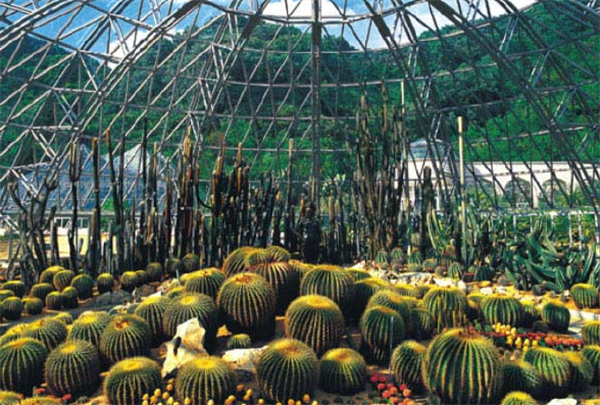
4.South China National Botanical Garden 华南国家植物园
South China National Botanical Garden, located at No. 1190 Tianyuan Road, Tianhe District, Guangzhou City, Guangdong Province, covers an area of 333 hectares. It is jointly established by the State Forestry and Grassland Administration, the Ministry of Housing and Urban-Rural Development, the Chinese Academy of Sciences, Guangdong Province and Guangzhou City. The second National Arboretum. [
The South China National Botanical Garden is established on the basis of the South China Botanical Garden of the Chinese Academy of Sciences. South China National Botanical Garden has two campuses. The Guangzhou park includes ex situ plant protection and open to the outside world park and scientific research park. Zhaoqing Dinghushan Park is Guangdong Dinghushan National Nature Reserve and Arboretum.
On May 30, 2022, the State Council of the People’s Republic of China approved the establishment of the South China National Botanical Garden in Guangzhou, Guangdong Province. On July 11, 2022, the South China National Botanical Garden was unveiled in Guangzhou.
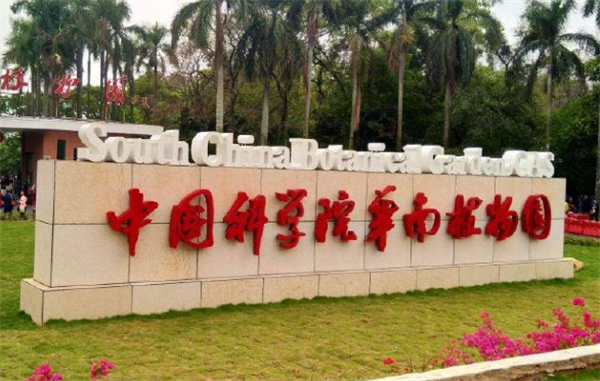
5.Beijing Botanical Garden 北京植物园
Beijing Botanical Garden is located at the foot of Fragrant Hills in the west of Beijing and is affiliated to the Beijing Municipal Park Management Center. 23 kilometers away from the city center. There are several buses available. Beijing Botanical Garden is a comprehensive botanical garden integrating science popularization, scientific research, sightseeing and other functions. It is one of the national key botanical gardens.
Beijing Botanical Garden is a national AAAA tourist attraction, China Forestry Science Popularization Base, China Wild Plant Protection Science Popularization Education Base, China Youth Science and Technology Education Base, Central State Organ Ideological Education Base, Beijing Science Popularization Education Base, and the first batch of boutique parks in Beijing. On May 6, 2019, the first Beijing Peony Culture Festival opened in Yanqing. From now until May 30, citizens can enjoy the national beauty and heavenly fragrance in 6 parks including Beijing Botanical Garden.
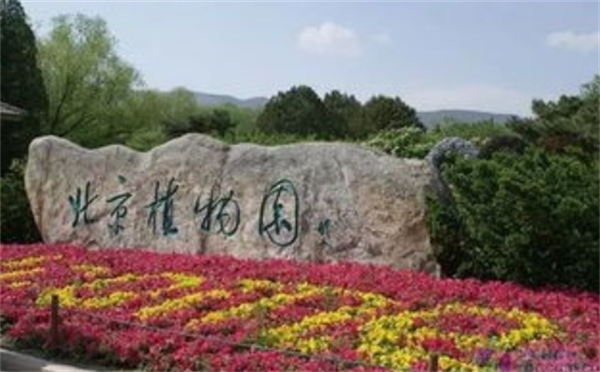
6.The Wuhan Botanical Garden of the Chinese Academy of Sciences 中科院武汉植物园
The Wuhan Botanical Garden of the Chinese Academy of Sciences is located in Wuchang District, Wuhan City, Hubei Province, China. It is a comprehensive scientific research institution integrating scientific research, species preservation and popular science education. AAAA-level tourist attractions.
The Wuhan Botanical Garden of the Chinese Academy of Sciences was established in 1956 and was established in November 1958. It was transferred to Hubei Province in 1972 and renamed as the Hubei Provincial Institute of Botany. It returned to the Chinese Academy of Sciences in 1978 and was renamed as the Wuhan Institute of Botany, Chinese Academy of Sciences. In 2003, it was renamed The Wuhan Botanical Garden of the Chinese Academy of Sciences again. In December 2017, it was selected into the list of the Ministry of Education’s first batch of national research and practice education bases and camps for primary and secondary school students.
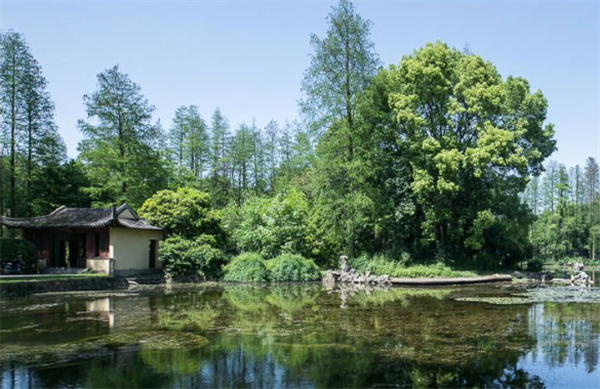
7.Xinglong Tropical Botanical Garden 兴隆热带植物园
Xinglong Tropical Botanical Garden, located in the hot spring tourist area of Xinglong Town, Wanning City, Hainan Province, belongs to the Spice and Beverage Research Institute of the Chinese Academy of Tropical Agricultural Sciences of the Ministry of Agriculture.
Xinglong Tropical Botanical Garden is divided into five functional areas: plant ornamental area, experimental demonstration area, science and technology research and development area, three-dimensional planting area and ecological leisure area; there are 12 types of plants collected: tropical spice plants, tropical beverage plants, tropical fruit trees, tropical economy Forest trees, tropical ornamental plants, tropical medicinal plants, palm plants, tropical aquatic plants, tropical endangered plants, tropical rare plants, tropical psammophytes and vegetable crops, etc. There are more than 1,200 plant varieties, and there are tropical economic crops such as coffee, Tropical economic crops such as pepper, vanilla, and cocoa, and famous and rare fruit trees, forest trees, and horticultural plant species such as durian and mangosteen, and wild plant resources and rare species such as blood seal throat.
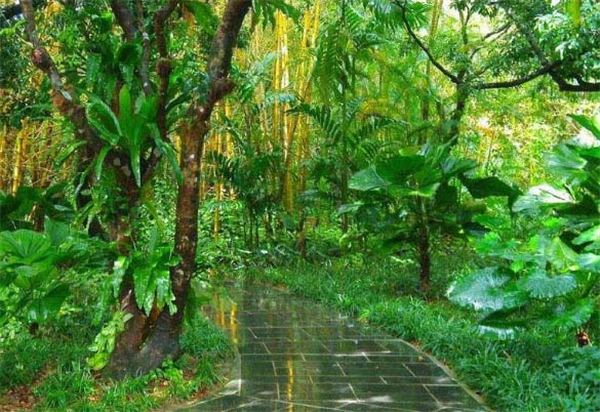
8.Lushan Botanical Garden 庐山植物园
Lushan Botanical Garden, formerly known as Lushan Forest Botanical Garden, is a subtropical mountain botanical garden located in the Hanpokou Valley in the southeast of Lushan Mountain, Jiujiang City, Jiangxi Province. In the 23rd year of the Republic of China (1934), it was founded by famous Chinese botanists Hu Xianyu, Qin Renchang, Chen Fenghuai and others.
Lushan Botanical Garden mainly introduces domesticable plants, develops and utilizes subtropical mountain wild plant resources, and breeds varieties. It is a famous subalpine botanical garden and the first formal botanical garden for plant scientific research in China. It is a comprehensive research institution that connects plants with agriculture, forestry, horticulture, medicine and environmental protection. It is also a garden for popularizing botany knowledge, covering an area of more than 5,000 mu. There are fir and cypress areas, tree areas, rock gardens, emerald gardens, greenhouse areas, swamp plant areas, nurseries, cloud tea gardens, kiwi fruit introduction areas, and medicine gardens in the park. Lushan’s specialty cloud tea and many ornamental plants are produced here.
Lushan Botanical Garden adheres to the garden concept of “scientific connotation, beautiful appearance, and cultural heritage”. As of 2013, it has collected more than 3,400 kinds of plants at home and abroad, stored a large number of plant specimens, and cooperated with 271 plants from 69 countries and regions. The research institution has established friendly relations in terms of seed exchange and is a member of the International Botanical Gardens Conservation Alliance (BGCI).
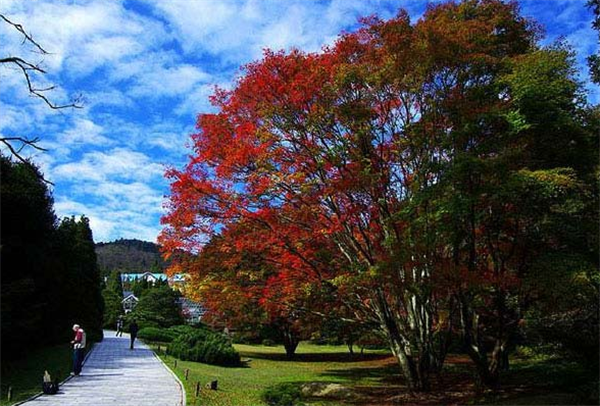
9.Hangzhou Botanical Garden 杭州植物园
Hangzhou Botanical Garden is located in Taoyuan Ridge, Xihu District, Hangzhou City, Zhejiang Province. The core location is at 30°15′ north latitude and 120°07′ east longitude. The total area is 284.64 hectares. The botanical garden was built in 1956. It is one of the scientific research institutions for plant introduction and domestication in China. It has nine exhibition areas and four experimental areas for plant classification, economic plants, bamboo plants, ornamental plants, trees, and landscape gardens. .
As of 2014, Hangzhou Botanical Garden has 78 families, 200 genera, and 848 species of native germplasm of woody plants, including 8 families, 31 genera, and 62 species of gymnosperms. There are 70 families, 169 genera and 786 species of angiosperms. On the basis of checking the original germplasm of woody plants, 15 main tree species resources in 8 families were basically checked, including 68 varieties of osmanthus, 11 varieties of peach, 60 varieties of plum, 190 varieties of camellia, and 20 varieties of rhododendron. indivual.
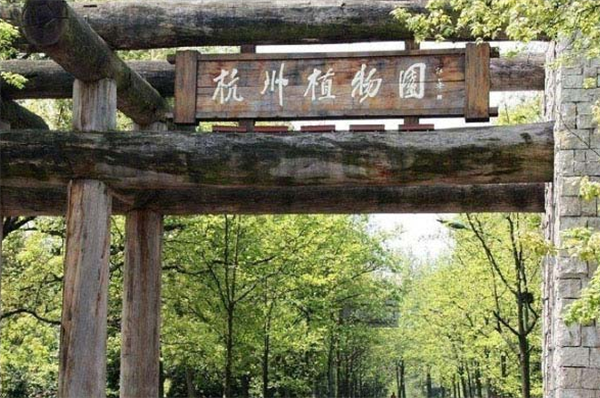
10.Nanjing Zhongshan Botanical Garden 南京中山植物园
Nanjing Zhongshan Botanical Garden is located in Zhongshan Scenic Area, Xuanwu District, Nanjing City. It is also known as the Institute of Botany, Chinese Academy of Sciences, Jiangsu Province. The first national botanical garden, one of the four major botanical gardens in China. Nanjing Zhongshan Botanical Garden is the first botanical garden in China to join the “International Union for the Conservation of Nature and Natural Resources”. Congress of the International Botanical Association.
As of the end of 2013, the botanical garden covers an area of 1.86 million square meters. There are more than 700,000 wax leaf specimens in the garden, more than 3,000 species of plants are preserved in the botanical garden, and 10 special gardens (areas) have been built; there are 700,000 specimens in the collection; There are Ornamental Plant Center, Medicinal Plant Center, Plant Information Center, Key Laboratory of Plant Ex situ Conservation and the largest herbarium in East China. The entire botanical garden is divided into north and south areas. The north area focuses on the protection, research and utilization of China’s central Asian and northern subtropical plants, and the south area is a botanical expo garden centered on the tropical plant palace.
